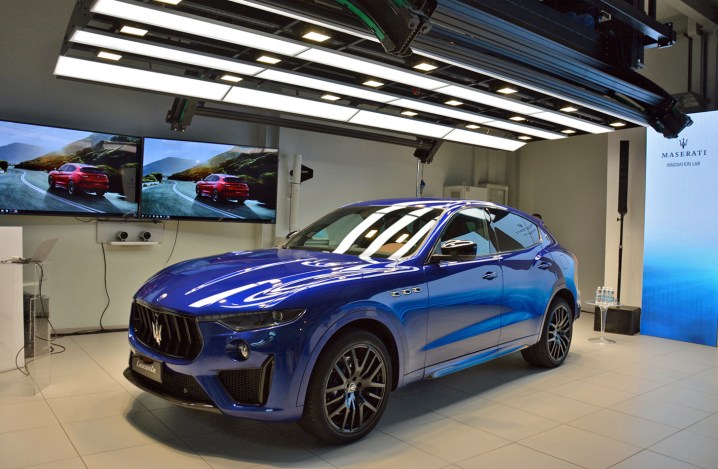
Maserati is deeply-rooted in its 105-year history, and it’s justifiably proud of its past, so I was surprised to hear Joe Grace, its head of product, use the word “terabytes” during a presentation at its headquarters. The Italian firm is preparing to write the next chapter in its story, and that plot is so focused on technology that it may as well be written in code.
Grace and his team face the delicate task of balancing Maserati’s heritage — which includes race cars like the emblematic Tipo 61, better known as the Birdcage, and luxury sedans like six generations of the Quattroporte — with the trends influencing the automotive industry as the 2020s loom. These trends are well-known: Customers have an insatiable appetite for connectivity, while governments are asking for cleaner — and, preferably, electric — cars.
Maserati’s decision-makers have their finger on the tech industry’s pulse. They’re monitoring how customers react to different features, and weighing the pros and cons of migrating away from hardware to software. It’s nearly impossible to design an interior without a screen, but should every single button, knob, and switch be replaced by one? The jury is still out. An over-the-air updating system is mandatory, however, so it’s a feature that future Maserati models will offer.
Grace told Digital Trends his team mines valuable information from the annual Consumer Electronics Show (CES). It’s like a weather vane that indicates which way the wind is blowing in the fast-moving tech industry.
Technology is increasingly influencing how the company develops cars, too. The innovation lab Maserati operates near its hometown of Modena, Italy, is packed with various simulators that cut down the amount of time needed to develop a new model, and the cost of bringing a car to the market. One is a car-sized device mounted on huge articulated arms that replicate the movements of a car. It’s installed in a dark room surrounded by giant screens that look like they come from a movie theater. It’s here that much of the fine-tuning happens. The simulator is linked to the company’s research and development department via an ultra-quick internet connection, so engineers can dial in a parameter — like a throttle response, for example — and immediately send it to the simulator so that it can be tested. Luca Dusini, Maserati’s head of vehicle dynamics testing and simulation, told Digital Trends that members of his team are able to test 40 different setups in one day, which would be impossible without an armada of software and hardware. This is particularly important as Maserati prepares to leap into the electric car arena. The firm knows how to tune an excellent V8, but EVs are a new ballgame.
Real-world testing remains indispensable, and that’s where the terabytes come in. Maserati’s intrepid, world-traveling test drivers put about three million miles on prototypes annually, and extract an astounding 40 terabytes of data which gets analyzed and fed into the simulators to make them more realistic. Professional race car driver Andrea Bertolini helps Maserati’s vehicle development team in the lab and on the track, and he said there’s a 90-percent correlation between, say, the Nürburgring track in Germany and the digital version Maserati dialed into its simulator. Testing cars on a simulator might sound like playing Gran Turismo Sport with world-class hardware; it’s not. “It’s virtual life, not a big game,” he explained.
Maserati’s product portfolio will look completely different in 2023 than it does in 2019.
Maserati will pack the technologies it’s developing into a new range of cars it will gradually release between 2020 and 2023. The product offensive will begin during the 2020 Geneva Auto Show when the company introduces a two-door sports car (yes, those still exist) we recently saw as a heavily-camouflaged test mule. The GranTurismo and GranCabrio will be replaced in 2021 and 2022, respectively, and the company is busily working on a second SUV that will slot below the Levante.
All of its future models will be available with an electric powertrain, the company recently announced. Without simulators, designing a full range of models would take years, and require billions of dollars. They’re such time-savers that, if all goes according to plan, Maserati’s product portfolio will look completely different in 2023 than it does in 2019.
Editors' Recommendations
- Fake engine noises in electric cars need to die
- The Maserati GranCabrio Folgore is one of the best-looking EVs yet
- Genesis Neolun concept is an electric SUV inspired by tradition
- Tesla faces new rival as a tech giant launches its first EV
- Porsche’s most powerful production car is an EV





